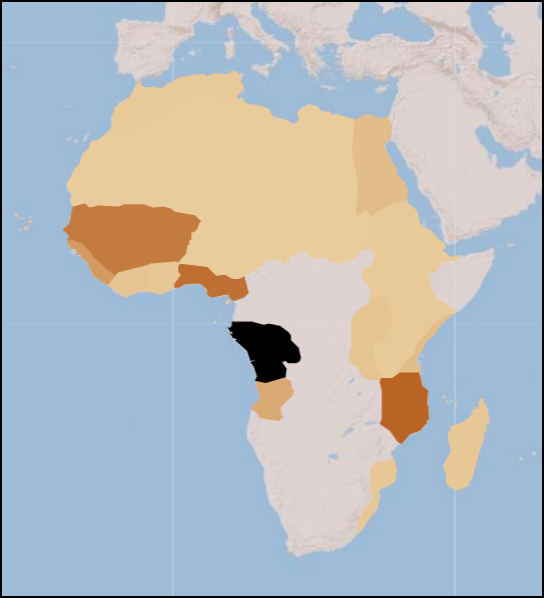|
The Departures dataset shows over 725,000 enslaved people leaving Africa by region between 1800 and 1920. For more information, visit AfricanRegions.org. |
Origins of "Liberated Africans"
Following UNESCO's Routes of Enslaved Peoples, this digital publication on "Liberated Africans" encourages collaboration and other initiatives related to preserving the memory of slavery, its abolition, and the resistance it created. The resources herein retraces migratory patterns beginning in Africa for over 700,000 enslaved people, but who were then recaptured according to international law and resettled as indentured laborers elsewhere. They were unwillingly involved in state-run schemes resulting in "liberation," but which were followed by indentures or conscriptions lasting several years.
The route of "Liberated Africans" began with enslavement in Africa. However, this phase of their journey was mostly undocumented, even though several individuals described and recorded their experiences from memory many years after recapture. While it remains impossible to locate precise inland itineraries for the majority of people documented before their capture, it is possible to assign inland origins to people according to a geographic hierarchy made accessible through AfricanRegions.org. Following rigorous academic standards, this regionalization divides Africa into six broad regions that are sub-divided into 34 subregions, including major offshore islands.
By grouping documented transit points or ports of departure into regions and subregions, it is possible to unravel the initial routes of enslaved people who would become "Liberated Africans." The Departures feature provides a gradient map to illustrate different proportions of "Liberated Africans" by region and subregion. Overall results demonstrate that over 260,000 "Liberated Africans" originated from West Central Africa, 235,000 came from West Africa, over 155,000 from East Africa, 24,000 leaving North Africa, among other smaller groups in the Sahara Desert. Knowning regional origins helps understand migratory patterns during enslavement, that is when and where people came from in Africa, and when and where they went in diaspora.
